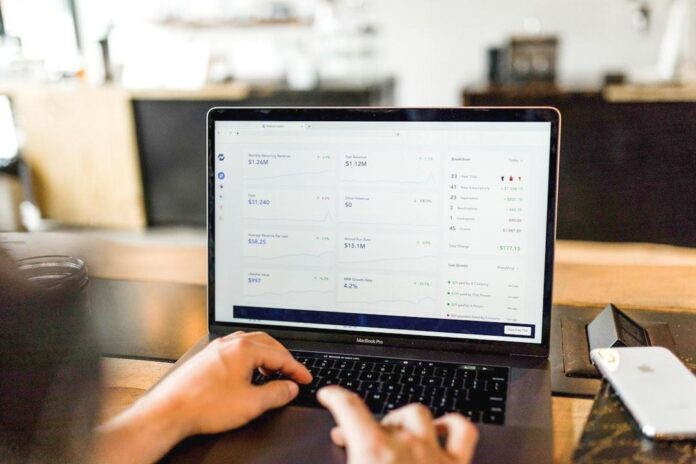As a B2B SaaS company, crafting a well-rounded marketing strategy that helps you navigate the competitive landscape and generate leads effectively is of utmost importance. To attain success, outbound marketing is a crucial piece of the puzzle that you need to master alongside inbound marketing strategies.
Outbound Marketing for B2B SaaS Companies involves striking a balance between inbound and outbound marketing tactics, identifying the Ideal Customer Profile (ICP) for effective targeting, and implementing data-driven strategies like Account-Based Marketing (ABM) in order to drive scalable growth and optimize ROI.
Dive into this blog post to explore valuable insights and proven strategies for executing successful outbound marketing campaigns tailored to the unique needs of B2B SaaS companies. Let us help you boost your sales pipeline and achieve your business objectives!
The Role of Both Inbound and Outbound Marketing Strategies in B2B SaaS
In today’s competitive business landscape, companies must strike the right balance between inbound and outbound marketing strategies to capture their target audience effectively and maximize ROI. In the context of B2B SaaS, both marketing approaches play a crucial role in driving success.
Inbound marketing involves attracting customers through content marketing, SEO, and social media. This approach aims to engage customers entering the funnel by acknowledging their needs and providing solutions. When executed effectively, inbound marketing can generate high-quality, scalable leads over time.
Outbound marketing, on the other hand, actively reaches out to potential customers through channels such as email, targeted ads, and other direct outreach methods. This method focuses on creating awareness among audiences not actively seeking solutions but may benefit from your offering. Although outbound marketing can deliver faster results, it often comes with diminishing returns.
By combining these two strategies, B2B SaaS companies can maximize their engagement with potential customers and optimize their marketing efforts. According to Kalungi, “For most B2B SaaS companies, the best marketing mix includes inbound and outbound together, playing off each other to create a solid marketing plan.”

Source: B2B Lead Generation ❄️☎️✉️ Datarob
Identifying the Ideal Customer Profile (ICP) for Effective Marketing
To tailor both inbound and outbound strategies effectively, B2B SaaS companies need a clear understanding of their Ideal Customer Profile (ICP). Defining an ICP allows businesses to target the right customers for both marketing approaches, ensuring their message resonates with the most valuable prospects.
To craft a comprehensive ICP, companies should consider factors such as:
- Industry: Which industries or verticals does your product or service cater to?
- Size: What size businesses will most benefit from your SaaS solution?
- Budget: What is the spending capacity of your target clientele?
- Technological Infrastructure: What existing technology stack does your target audience use, and how does your solution fit in?
- Location: Are there specific regions or territories where your SaaS offering is particularly well-suited?
Taking the time to understand and define the ICP helps ensure that marketing and sales efforts are targeted at the most relevant audience, enhancing overall effectiveness.
Balancing Inbound and Outbound Marketing for Optimized ROI
To maximize ROI from marketing efforts, B2B SaaS companies must strike a balance between inbound and outbound marketing strategies. While inbound marketing can provide scalable results over time, outbound marketing can quickly generate leads and attract prospects who may not have actively sought a solution.
Combining the two marketing strategies allows businesses to maximize their coverage and engagement with potential customers, improving the odds of conversion. Furthermore, inbound and outbound marketing can complement each other by leveraging targeted content and personalized outreach to address each prospect’s unique needs and pain points effectively.
For example, inbound marketing can generate initial interest through educational content, while outbound marketing can engage those prospects through tailored email campaigns or display ads. By maintaining a balanced mix of inbound and outbound efforts, businesses can create a more comprehensive marketing plan that delivers consistently strong results.
To achieve a well-rounded marketing strategy, companies should:
- Develop a deep understanding of the ICP to ensure content and outreach efforts resonate with the target audience.
- Align inbound and outbound initiatives to provide a seamless experience for prospects as they progress through the buying journey.
- Regularly assess the performance of both inbound and outbound efforts to identify areas for optimization and improvement.
- Adapt content and messaging to address changing market conditions and target audience preferences.
By understanding the value and unique benefits of inbound and outbound marketing strategies, B2B SaaS companies can successfully navigate the competitive landscape, optimize lead generation, and drive sustainable growth in today’s dynamic business environment.
Crafting an Effective Outbound Marketing Strategy
An effective outbound marketing strategy starts with understanding your ICP and tailoring your content accordingly. Design your messaging to address their pain points and educate them on the solutions your B2B SaaS can provide. Contributing valuable insights, educational material, and case studies help build credibility with your prospects and showcase the benefits that your software offers.
High-quality content combined with strategic targeting will make your outbound marketing efforts resonate with potential customers, making your campaigns more likely to succeed. Ensure that messaging is consistent across all channels, whether through email, targeted ads, or direct outreach efforts.
The Critical Role of SDRs and BDRs in Differentiating Inbound and Outbound Lead Engagement
Sales Development Representatives (SDRs) and Business Development Representatives (BDRs) play crucial roles in the success of inbound and outbound marketing strategies within B2B SaaS companies. SDRs focus primarily on handling incoming leads or ‘hand-raisers,’ who have shown interest in your product through engagement with your inbound marketing efforts. On the other hand, BDRs actively seek out prospects through outbound tactics like cold calls or emails to discover their pain points and nurture their interest in your software[^1^]. This differentiation between inbound and outbound leads helps tailor the type of follow-up and nurturing required.
Measuring the Impact of Sales from the Outbound Funnel
Measuring the success of your outbound marketing strategy is crucial in understanding its effectiveness. However, be aware that closing outbound deals may take longer than inbound ones, as prospects must be sought out and might not be ready for a sales conversation yet.
Tracking key performance indicators (KPIs) like lead conversion rates, click-through rates, and cost per lead can help you evaluate your outbound marketing efforts. Analyzing these metrics enables you to optimize your campaigns and ensure that your marketing budget is spent wisely.
Having a clear follow-up plan in place for nurturing outbound leads is essential to increasing the chances of closing deals. Regular communication and personalized content can help build strong relationships and keep your SaaS solution top of mind with your prospects.
Nurturing Strategies for Outbound Leads
Nurturing outbound leads requires a more personalized approach than inbound leads. Inbound leads might be ready to convert quickly, but outbound leads often require more relationship building and time investment to convince them to choose your solution. This process can include personalized emails, relevant content, or webinars that cater to their specific needs.
A well-thought-out long-term digital relationship with outbound leads will help move them through the sales funnel, even if they are not ready to convert immediately. By always being present with valuable content and tailored support, your prospect stays engaged until they are ready to take the next step and invest in your SaaS solution.
Frequently Asked Questions
What is the difference between inbound and outbound marketing in B2B SaaS?
Inbound marketing focuses on attracting customers by creating content, optimizing SEO, and engaging on social media. On the other hand, outbound marketing actively reaches out to potential customers through email, targeted ads, and direct social marketing efforts.
How do SDRs and BDRs differ in engaging with leads?
SDRs handle incoming leads from inbound marketing efforts, whereas BDRs actively seek out prospects through outbound tactics like cold calls and emails. This differentiation helps tailor the type of follow-up and nurturing required for different leads.
What are some examples of outbound marketing strategies for B2B SaaS companies?
Examples of outbound marketing strategies for B2B SaaS companies include targeted email campaigns, social media advertising, industry events, webinars, and direct mail efforts.
What KPIs should I track to measure the success of my outbound marketing efforts?
Key performance indicators (KPIs) to track include lead conversion rate, click-through rate, cost per lead, and overall ROI. Analyzing these metrics will help you optimize your campaigns and gauge the effectiveness of your outbound marketing strategy.
How can I nurture outbound leads effectively?
Nurture outbound leads by building a strong digital relationship through personalized emails, relevant content, and webinars tailored to their specific needs. Consistent communication and providing value will help move them through the sales funnel and increase the chances of them choosing your SaaS solution.
[^1^]:The balance between Inbound and Outbound for B2B SaaS marketing

